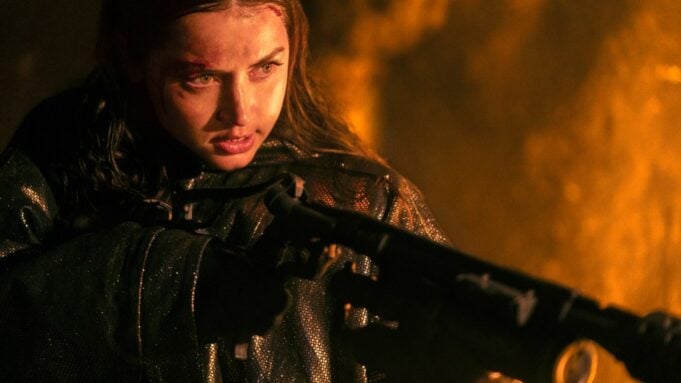In “From the World of John Wick: Ballerina,” an unabashedly pulpy, ultraviolent, and entertaining spin-off of the “John Wick” franchise, Eve Macarro (Ana de Armas), a ballerina who is being trained in the assassin traditions of the Ruska Roma, gets a piece of advice that sounds like it’s going to be iconic. Her trainer, Nogi (Sharon Duncan-Brewster), shoots her a gaze of fury and says, “Fight like a girl.” She means that men possess a brute strength that Eve can’t necessarily match; instead, she should evolve a combat style out of her feminine essence. That tends to be how a lot of female action fantasies have gone, stretching back to the “Batman” TV series, where Batman and Robin were all Pow! and Bam! while Yvonne De Carlo’s Batgirl employed elegant karate kicks. In movies from “La Femme Nikita” to “Wonder Woman,” “Fight like a girl” has not been a sexist insult — it’s been a cool way of equalizing things. When the end credits roll on “Ballerina,” the soundtrack anthem, by Evanescence and K.Flay, is called “Fight Like a Girl.”
But here’s why this is all a bit ironic. In “Ballerina,” the events of which are set in between “John Wick: Chapter 3 — Parabellum” and “John Wick: Chapter 4,” the Eve we see does not fight like a girl. She fights by summoning the same existential viciousness, the whatever-weapon-is-at-hand in-your-face brutality (and I do mean in-your-face) that John Wick does. She fires pistols and machine guns. She breaks limbs and smashes throats and gouges eyeballs. She attacks enemies with kitchen utensils and slashes them with a samurai sword. She detonates them with multiple grenades. She uses a pair of ice skates as nunchucks and, in the film’s climax, gets into the first duel I’ve ever seen fought with flame-throwers, one inferno-spouting monster gas cannon versus another. The message: This is how girls now fight.
Though she’s at the center of all this mayhem, Ana de Armas exudes a calm, an inner placidity that echoes that of the series’ standard-bearer. Back in 2014, part of the counterintuitive élan of casting Keanu Reeves as John Wick is that from the “Bill and Ted” films to “Little Buddha” to “The Matrix,” Reeves had always acted with a slightly spacey deadpan that was maybe sort of Zen. In the “Wick” films, his very tranquility became homicidal. And so it is with de Armas, an expressive actor who in “Ballerina” never loses her rose-lipped repose. Call her Jane Wick.
The plot, in case you were wondering, is pure trash, and that’s OK. In the opening sequence, the young Eve (played by Victoria Comte) watches her father get slaughtered by fighters who’ve been dispatched by the Chancellor (Gabriel Byrne), the leader of the dark warrior cult they all belong to. Eve is rescued by Winston Scott (Ian McShane), who returns once again as the mentor of John Wick — and now the savior of Eve. He places her under the care of the Director (Anjelica Huston, acting very Tim Burton meets Madame Tussauds), who runs the Ruska Roma with an iron hand, turning ballet class into a form of violence (and staging fight training like ballet). But the Ruska Roma and the Chancellor’s cult have a centuries-long pact to steer clear of each other. When Eve is sent out into the world, where she kills a henchman with a tell-tale X branded into his wrist, she upsets the apple card of that accord by deciding to get revenge on those who killed her father.
The film’s entire second half is set in a wintry Middle European mountain village where the Chancellor’s cult lives in secret. It’s Eve vs. all of them, with one complicating factor, that being the arrival of a stone-cold killer whose identity I won’t reveal. He has been dispatched to stop Eve, though his sympathies might waver. “Ballerina” is a worthy entry in the “John Wick” canon, though I say that as someone who doesn’t think the “John Wick” canon is all that. By the end, Ana de Armas has proved that fighting like a girl and fighting like a guy need not be appreciably different, especially if they’re all fighting like a video game.
From Variety US
Love Film & TV?
Get your daily dose of everything happening in music, film and TV in Australia and abroad.































